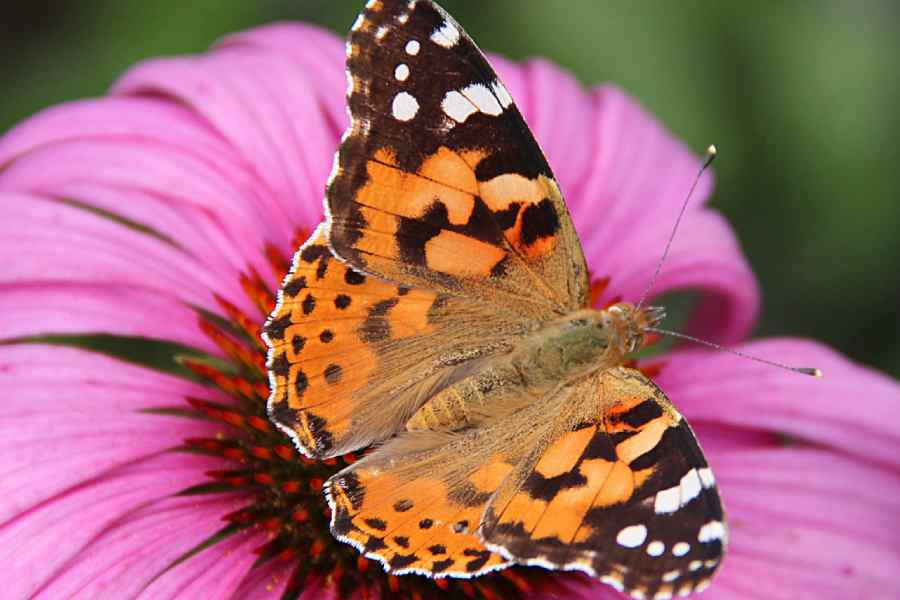Early one morning in late October 2013, Gerard Talavera, an entomologist, saw something highly unusual — a flock of painted lady butterflies stranded on a beach in French Guiana.
The painted lady, or the species Vanessa cardui, is one of the world’s most widespread butterflies, but it isn’t found in South America. Yet there they were, lying in the sand of the continent’s eastern shores, their wings tattered and riddled with holes. Judging by their condition, the bleary-eyed Talavera, who works at the Institut Botànic de Barcelona in Spain, guessed they were recovering from a long flight.
The insect is a champion of long-distance travel, routinely crisscrossing the Sahara on a trek from Europe to sub-Saharan Africa, covering up to 9,000 miles. Could they also have made the 2,600-mile journey across the Atlantic Ocean without any place to stop and refuel? Talavera wanted to find out.
Following the long-range movements of insects is challenging. Tools like radio-tracking devices are too large for insects’ small and delicate frames, and radar allows for monitoring only of specific locations. Scientists have had to rely on educated guesses and citizen-scientist observations to piece together travel patterns.
“We see butterflies that appear and disappear, but we are not proving the links directly, we are just making assumptions,” Talavera said.
In 2018, he developed a way to use a common genetic sequencing tool to analyse pollen DNA. Pollen grains stick to pollinating insects like butterflies when they are feeding on nectar from flowers. Talavera used a method called DNA metabarcoding to sequence the pollens’ DNA and determine which plant they came from. Later, the DNA could be traced to geographical flora to chart the insect’s path.
In a paper published on Tuesday in the journal Nature Communications, Talavera and his team describe a crucial clue to cracking the mystery of the stranded butterflies: Pollen clinging to the butterflies in French Guiana matched flowering shrubs in West African countries. These shrubs bloom from August to November, which matches the timeline of the butterflies’ arrival. That suggested the butterflies had crossed the Atlantic. The idea was tantalising. But Talavera and his team were careful not to jump to conclusions.
In addition to studying the pollen, the researchers sequenced the butterflies’ genomes to trace their lineage and found they had European-African roots.
This ruled out the possibility that they had flown over land from North America. Then, they used an insect-tracking tool called isotope tracing to confirm that the butterflies’ natal origins were in Western Europe, North Africa and West Africa. By adding weather data showing favourable winds blowing from Africa to America, they were building up to a monumental finding.
“This is a brilliant piece of biological detective work,” said David Lohman, an evolutionary ecologist at the City College of New York who was not involved in the work. Talavera’s forensic-detective-like tracing supported the conclusion that the painted lady butterflies made the first transoceanic journey ever recorded by an insect.
It’s likely they were on their typical route through Africa when they were swept off course by a strong wind. Once over the ocean, the butterflies kept flying until they reached the shore.
Insect migrations are the largest movement of biomass around the world. Over southern England alone, a staggering 3.5 trillion insects migrate annually. Their ability to transport pollen, fungi and even plant diseases across vast distances highlights the global impact of these tiny critters. With the painted ladies’ oceanic migration, experts say, scientists may have a better way of tracking these journeys.
The finding showed that the delicate creatures could endure a difficult and dangerous journey, which most likely lasted between five and eight days. It also demonstrates how much scientists still have to learn. Jessica Ware, an evolutionary biologist at the American Museum of Natural History who was not involved in the study, called the study’s methods “innovative”, adding that it will “help us understand migrations”.
New York Times News Service











